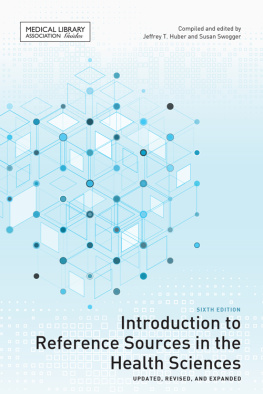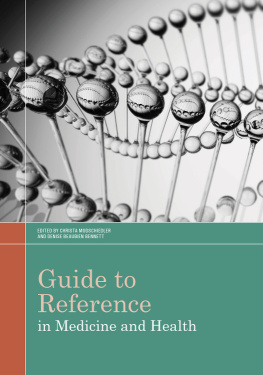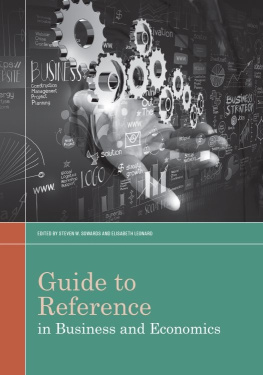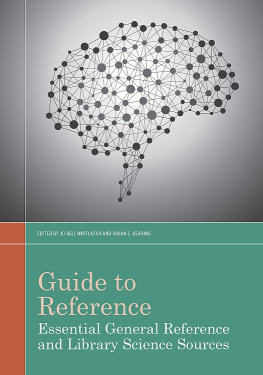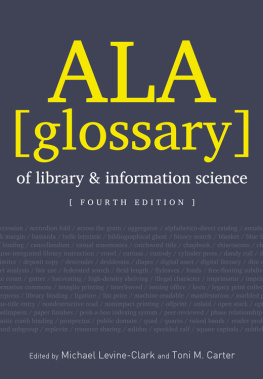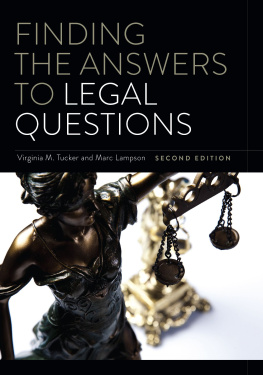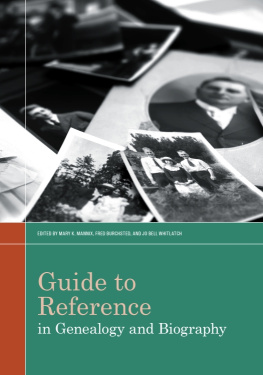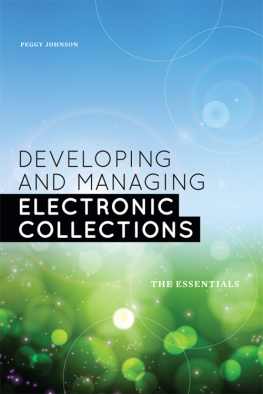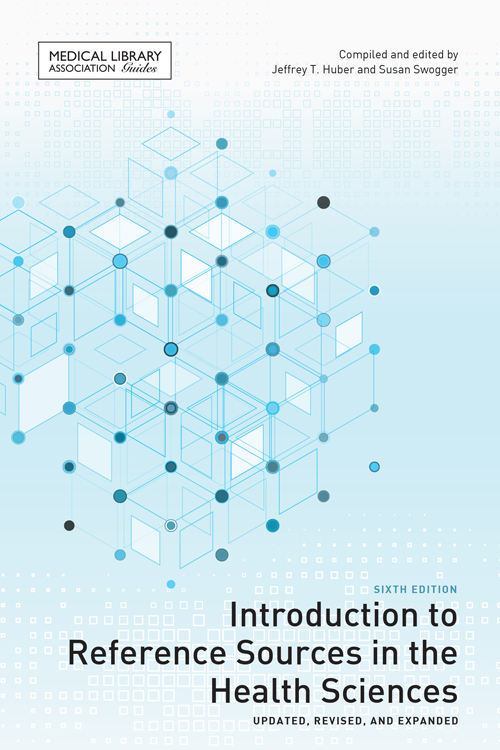
ALA Neal-Schuman purchases fund advocacy, awareness, and accreditation programs for library professionals worldwide.
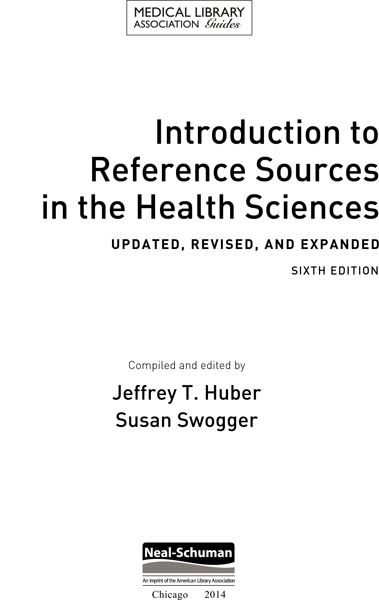
JEFFREY T. HUBER is Director, School of Library and Information Science, at the University of Kentucky. He completed his masters at University of Kentucky and earned his doctorate at the University of Pittsburgh and has been on the faculty in the School of Library and Information Studies at Texas Womans University since 1998. He held a concurrent appointment as associate director for research at the Houston Academy of MedicineTexas Medical Center (HAMTMC) Library from 2001 to 2008. During that time he also was appointed adjunct associate professor in the School of Health Information Sciences at the Health Science Center at Houston, University of Texas.
SUSAN SWOGGER began her interest in libraries by repairing books as a student worker, eventually going to the University of Texas at Austin for library school. She spent some years as director of a psychology library in Phoenix before joining the University of North Carolinas Health Sciences Library as Collections Development Librarian.
2014 by the Medical Library Association. Any claim of copyright is subject to applicable limitations and exceptions, such as rights of fair use and library copying pursuant to Sections 107 and 108 of the U.S. Copyright Act. No copyright is claimed for content in the public domain, such as works of the U.S. government.
Extensive effort has gone into ensuring the reliability of the information in this book; however, the publisher makes no warranty, express or implied, with respect to the material contained herein.
ISBNs: 978-0-8389-1184-6 (paper); 978-0-8389-1956-9 (PDF); 978-0-8389-1957-6 (ePub); 978-0-8389-1958-3 (Kindle). For more information on digital formats, visit the ALA Store at alastore.ala.org and select eEditions.
Library of Congress Cataloging and Publication Control Number: 2014004660
Cover image Click Bestsellers/Shutterstock, Inc.
To
Fred W. Roper
who identified the need for this textbook and mentored and guided the contributors of the first four editions
Contents
J. David Johnson
Anneliese Taylor and Jean Blackwell
Jeffrey T. Huber
Feili Tu-Keefner
Chapter 5. Indexing, Abstracting, and Digital Database Resources
Laura Abate
Melody Allison
Beatriz Varman
Michelle L. Zafron
Katherine Schilling
Penny Coppernoll-Blach and Sharon Giovenale
Mary L. Gillaspy and Mary OConnor Pranica
Barrie Hayes and Jennifer Darragh
Lucretia W. McClure
Updated and revised by Michael A. Flannery
Tracy Shields
Chapter 15. Grant Sources
John D. Jones Jr.
Susan Swogger
Megan von Isenburg and Mellanye Lackey
Figures
Tables
The first edition of Introduction to Reference Sources in the Health Sciences was conceived and published more than thirty years ago, inspired by Fred Ropers need for a textbook to use with his health sciences classes at the University of North Carolina. He invited me to join him in this endeavor as a practicing health sciences librarian at the UNC-CH Health Sciences Library. The text was designed to be a selective guide to the most important reference resources in the health sciences, with sections on the Reference Collection, Bibliographic Resources, and Information Resources. The plan was presented to the Medical Library Associations Books Panel. Our proposal was accepted and the first edition appeared in 1980. Fred and I were extremely gratified by the overwhelmingly positive reviews and the enthusiastic acceptance that the health sciences library community gave the first and subsequent editions.
From the beginning, Fred and I sought out knowledgeable practicing health sciences librarians who had the expertise to address the topics covered in each chapter. It has always been a collaborative endeavor. Within the format we developed, each author was given the discretion to identify and describe the most relevant resources on their topics. This approach has proven to be very effective and has given a broad cross-section of Medical Library Association members an opportunity to share their expertise with several generations of library school students and colleagues new to the field of health sciences librarianship.
In reviewing the first edition with subsequent ones, the most significant change is the increasing importance of electronic resources and the pervasiveness of the Web. The first edition primarily focused on traditional print resources, with the notable exception being MEDLINE and early indexing and abstracting databases. The format, with three sections, remained the same. Additions and changes are most apparent in the resources covered in the Information Sources section. The first two editions have chapters on Audiovisual Reference Sources. The second edition (1984) added chapters on Grant Sources and Health Legislation Sources. With the third edition (1994) the chapter on Health Legislation Sources was dropped and the chapter on Audiovisual Sources was expanded to include Microcomputer and Multimedia Reference Sources. The fourth edition in 1992 dropped the chapter on Audiovisual, Microcomputer, and Multimedia References Sources, with online resources in all formats having primacy and representation in each chapter. A chapter on Consumer Health Reference Sources was also added in the fourth edition, recognizing the increasing importance of the information needs of that population and the health professionals that serve them. The sixth edition reflects the further evolution of health sciences reference resources and services. Addition of an introductory chapter on Health Information Seeking Behaviors and two new information chapters on Point-of-Care Sources and Global Health Sources show the expanding scope of the profession and the range of sources and services available.
Fred Roper and I started this publication without ever dreaming that it would endure and grow to become a standard textbook in health sciences librarianship. We are most gratified that our efforts and collaboration with this publication have continued and expanded. As Fred planned to retire, we invited Jeff Huber to join us in editing and compiling the fourth edition. Jeff was a great addition to our team as I took the lead with that edition. With the publication of the fifth edition, just prior to my retirement, Jeff and I invited Jean Blackwell to join our team. We achieved a smooth transition of the editorial responsibilities, without Freds guidance. Jeff invited Susan Swogger to co-edit and compile the expanded sixth edition. They have engaged a remarkable list of continuing and new chapter authors to compile this edition. I am pleased to see that the transition of editors has been achieved so seamlessly and I am excited to see this latest edition in such capable hands. I look forward to the continued success of Introduction to Reference Sources in the Health Sciences.
I want to thank Fred Roper for inviting me to join him in developing and shaping this textbook. He has been a wonderful mentor over the course of my career. I have benefited from his expertise, knowledge, and vision for the training and continuing education of health information professionals. It has been a joy to have the opportunity to work with him on the creation and development of Introduction to Reference Sources in the Health Sciences. Our professional and personal friendship has enriched my life.
Next page
